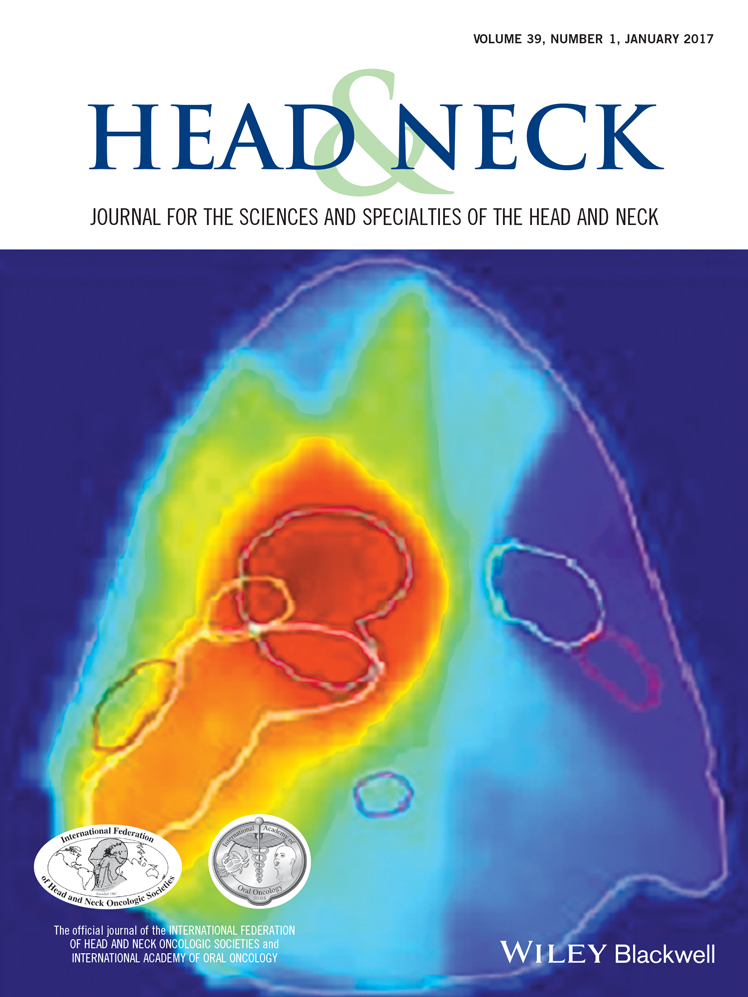Bilateral vocal fold paralysis and dysphagia secondary to diffuse idiopathic skeletal hyperostosis
This work was presented at the Combined Otolaryngology Spring Meeting (COSM), Boston, MA, April 2–26, 2015.
Abstract
Background
Diffuse idiopathic skeletal hyperostosis (DISH) is an idiopathic spinal disease common in the elderly and characterized by flowing ossification and osteophyte formation along the spinal column. Cervical hyperostosis is capable of producing dysphagia, stridor, and airway obstruction; however, there are no extant reports of true paralysis of bilateral vocal folds in patients fulfilling the criteria for DISH.
Methods and Results
We report a case of a 61-year-old man presenting with dysphagia and dyspnea. Flexible laryngoscopy revealed bilateral true vocal fold paralysis. Cervical radiograph showed flowing ossification of the anterior longitudinal ligament with preservation of intervertebral disc height. Tracheotomy and cervical osteophytectomy were performed, after which the patient showed improved swallowing and speaking ability and was decannulated without complication.
Conclusion
In the case presented, cervical osteophytectomy dramatically reversed bilateral vocal fold paralysis and dysphagia secondary to hyperostosis, thus negating the need for prolonged tracheostomy and feeding tube dependence. © 2016 Wiley Periodicals, Inc. Head Neck 39: E1–E3, 2017




